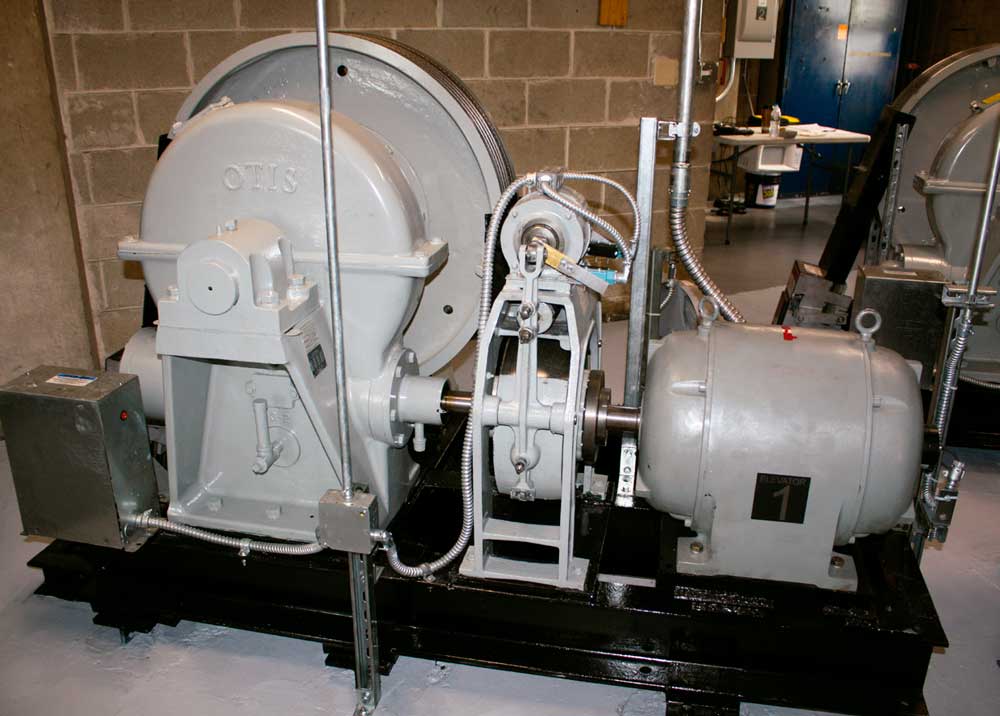Marquette University’s Schroeder Hall
Jun 1, 2017

College life can be hectic. Between mountains of homework, impossible class schedules and part-time jobs, many students are lucky if they can find even a few spare minutes each day. The 650 college students living in Marquette University’s Schroeder Hall were no exception. When frequent elevator service issues began to have a negative impact on the students’ busy schedules, the university sought a more energy efficient and reliable solution to keep student traffic flowing smoothly.
The 10-story Schroeder Hall residence building, located in the heart of downtown Milwaukee, was built in 1956. The brick building is one of only three structures on the university’s campus constructed specifically by the school to house students. The facility was initially opened as a men’s residence hall. However, it became coed, by floor, in 1973. It was named for Walter Schroeder, a Marquette benefactor who served seven years on its board of governors.
Despite the building having been well maintained and even remodeled (though more than a decade ago), its pair of aging geared induction elevators had remained relatively untouched over the years. Two DC geared motors served as the backbone of the system and were powered by antiquated motor-generator-set controls.
Maintaining the highest levels of functionality, reliability and safety were all essential requirements when the university reached out to contractor Performance Elevator Consulting, LLC seeking a modernization solution. To help the university achieve its goal of higher efficiency while delivering a reliable and smoother ride, Magnetek provided two Quattro AC Cube Elevator Drives with integrated regeneration. This space-saving, all-in-one system is designed to deliver the clean power, reliability and performance required for today’s green building solutions. Marquette was looking for the energy efficiency provided by a regenerative package but with the ability to work with an emergency generator required for rescue situations. Magnetek worked with GAL Manufacturing Corp. to customize the drive software and performed modifications onsite to inhibit regeneration when the elevator is running on generator power.
Utilizing Quattro AC elevator drives, the elevator system was able to achieve high levels of functionality, safety and comfort, as well as:
- Improved operating efficiency: the Quattro AC drive reduces the peak power demand and overall energy consumption.
- Near-unity power factor and clean harmonics (IEEE 519 standards)
- Improved ride quality
The drives are also designed to consume the lowest energy possible, and their accurate controls provide smooth acceleration and deceleration. They also include an optional emergency-power feature, allowing the facility to operate the elevators at full speed, even when operating on emergency power.
The project itself took place in May-August 2015. Then, during the holiday break of December 2015/January, when students were out of school, Magnetek returned to add the software it developed to allow for the regeneration to work with an emergency generator.
Why “Clean Harmonics” Matter
The primary advantages of high power factor and clean drive harmonics are reduced heating, better utilization of existing distribution-line equipment and prevention of interference with other devices, including computers, fed from the building’s electrical supply system. The Quattro elevator drive’s clean utility-side drive harmonics (less than 8% total harmonic distortion [current]) are built into the drive, precluding the need for an add-on filter. The clean harmonics and high power factor further reduce installation costs by eliminating the need to upgrade the building’s existing utility feeder supply.
How to Know When to Modernize
A single system error or maintenance issue does not trigger most modernization projects. Building owners have the convenience to decide when and how to modernize their elevator systems. This allows savvy owners time to perform a thorough inspection of their existing system and weigh their options before deciding whether replacement or modernization will deliver the best return on their investment.
Simply waiting for an aging elevator system to fail before weighing all the options could spell an expensive disaster and lead to increased costs down the road. The following items present an elevator system as a good candidate for modernization:
- The elevator system is more than 20 years old.
- The building use has changed.
- There has been an increased number of service calls.
- There are ride quality issues.
- Users are frustrated over long wait times.
- There is an interest in reducing total energy costs.
Get more of Elevator World. Sign up for our free e-newsletter.







